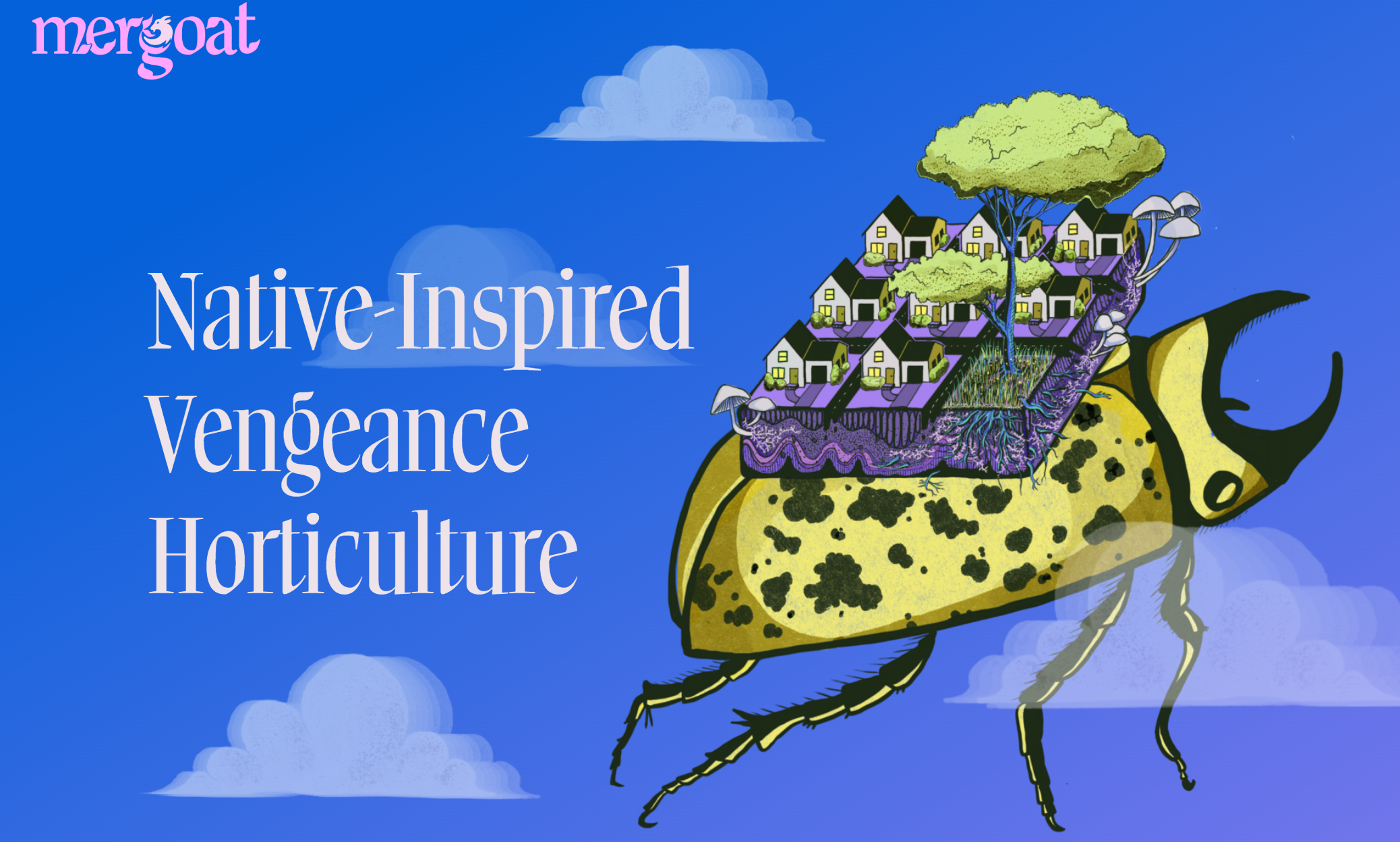by Mike Templeton
The Urban Appalachian Community Coalition has taken on environmental issues in a number of ways. You may recall our article about the litigation led by lawyer Rob Bilott against DuPont corporation for leaking toxic chemicals into the groundwater in Eastern Ohio. The work of urban Appalachians on the front of environmental issues extends at least as far back as the Urban Appalachian Council’s struggle with Queen City Barrel in Lower Price Hill. What these issues reveal, and what Appalachians know well, is that environmental problems and environmental justice are not just issues of science and law. They involve the ways corporate power makes use of people and land, and they involve the ways these practices shape and potentially damage community. A knew publication centered on Southern Appalachia aims to address environmental issues from a new perspective. Mergoat Magazine extends the focus of ecology to include communities, the ways humans are situated in nature, and how we can approach ecological issues in ways that involve direct action.

Sorrel Inman is one the primary people driving Mergoat Magazine, and they are also working hands-on toward ecological restoration. Along with the magazine, Inman operates an ecological restoration company. When I caught with them, they were on a job site removing invasive species to clear the way to replacing these things with indigenous plants. Inman and those they work with are committed to putting into practice the ecological philosophy on which Mergoat is founded.
What sets Mergoat apart is the approach they take toward the environment. For decades, ecology and environmental efforts have been grounded in an approach that frames the environment as something external to humanity. Even though environmentalists and scientists have sought to protect the environment, the perspective has historically been one in which humans are an external presence who operate as protectors. Mergoat is founded on the ideas that humanity is an inextricable feature of the environment, that things like human communities are features of the environment, and vice versa. As they state in the magazine: “one of our primary goals is to work towards deconstructing artificial binaries such as ‘nature’ and ‘technology,’ or ‘wilderness’ and ‘society.” Inman states all this clearly by explaining that the philosophical approach to Mergoat begins with the idea that “humans are an ecologically embedded species.” Some of this approach is derived from the ecological philosophy of the past several years—a topic Inman knows well.
Sorrel Inman comes to Mergoat through the circuitous path of multiple educational directions. After studying philosophy and theology, they decided to take some time to reevaluate where they stood: “I became disenchanted with academia and went into agricultural practice for some time. This led to eco-restoration.” After getting their hands dirty, Inman realized they still needed to remain engaged with intellectual work. This drive led Inman and others to begin Mergoat Magazine. Inman said “they began conspiring about a year ago. I got in touch with a colleague from graduate school, Kathryn Gruszecki who is now the editor, and the magazine began.
In talking about what drives them and the magazine, Inman told me that “at some point in modernism, we lost our ability to understand that we are embedded ecologically. We need to re-imagine ourselves as a society that, for good or ill, are part of an ecology.” This insight is key to a new ecological understanding that refuses to see humanity as separate from the natural world. The idea that we are cutoff from nature has been something of a barrier to new insights in finding solutions to problems as far-reaching as global climate change, but also issues like how to build supportive communities. The approach of Inman and Mergoat is consistent with the idea of the three ecologies formulated by Felix Guattari: mental, social, and environmental ecologies. While we can easily speak in complex philosophical terms, I think Inman says it best when they told me that Mergoat is all about “re-introducing the idea that we are a part of nature.” To put these ideas into practice, Mergoat also operates as an eco-restoration business.
The restoration side of Mergoat works with private landowners and homeowners to help them focus on their properties from an ecological perspective. As I said above, when I spoke to Inman, they were in the process of removing some invasive species from the land. Inman explain that much of their work involves helping people “bring together their desire for the aesthetic beauty of landscape design with an eye toward ecological balance.” This mean cutting things like Bush Honeysuckle and replacing it with plant species that are indigenous to the Southern Appalachian region. In bringing the same approach to landscape design that they bring to the magazine Inman says the goal is help clients “develop an interpersonal relationship with their environment rather than simply seeing the landscape as functional space.” In other words, the landscape becomes part of the mental, social, and environmental ecologies.
Mergoat Magazine is focused primarily on the Southern Appalachian region. As they explain, they resist the “kitsch and commercial operations” that now stand in for Appalachian identity and the Appalachian region. They are committed to resisting and repairing the damage left by things like the extraction industries and other large-scale capitalist projects that have left the region vulnerable to catastrophic flooding and other disasters– issues the Urban Appalachian Community Coalition have wrestled with at length. Mergoat Magazine, Inman, and others are looking toward expanding their work across cultures and even continents as they coordinate with other groups. As we in Southern Ohio look toward our own environmental legacies in the forms of industrial catastrophes of the kind Rob Bilott took on and restoration efforts such what we see in the Arc of Appalachia, Mergoat Magazine is a welcome presence.
You can find Mergoat Magazine online at this link: https://mergoat.com/product/mergoat-magazine/.
You can also follow Mergoat Magazine on Instagram at this link: https://www.instagram.com/mergoat.mag/.
Mike Templeton is a writer, independent scholar, barista, cook, guitar player, and accidental jack-of-all-trades. He is the author of the forthcoming The Chief of Birds: A Memoir. Available later this year from Erratum Press, and Impossible to Believe, forthcoming from Iskra Books. Check out his profile in UACC’s new Cultural Directory. He lives in downtown Cincinnati with his wife who is a talented photographer. They spend their free time walking around the city snapping photos. She looks up at that the grandeur of the city, while Mike always seems to be staring at the ground.

